Inductions and Honorary Members
Spring
2013
Special Feature
PhysCon Awards & Accolades
Inductions and Honorary Members
Sigma Pi Sigma membership recognizes commitment to excellence in the study, propagation, and fellowship of physics. Most members are received as undergraduates on the basis of their chapter’s standards for academic success and character. Graduate students are received by a chapter on the basis of making satisfactory progress toward an advanced degree, and professional physicists are received by a chapter on the basis of their professional record. Physicists who have attained noteworthy distinction on the national or international level in physics or a closely allied field may be designated for the special distinction of Honorary Membership, which may only be awarded upon election by the National Council of SPS and Sigma Pi Sigma.
At the 2012 Quadrennial Physics Congress in Orlando, FL, our society welcomed a new class of distinguished members. Four scientists were inducted as “At Large” members, and six noteworthy physicists were presented with an Honorary Membership. The presentations were made by student representatives of the SPS National Council. We are pleased to welcome our newest members into the community of Sigma Pi Sigma.
Sigma Pi Sigma Inductions
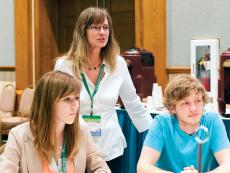
Shelly Arnold, for her great achievements in both technology development and the management of high technology companies, for her wide-ranging accomplishments in bringing valuable electronic products to market, and for her service on the Board of Directors of Habitat for Humanity for Kitsap County, WA.
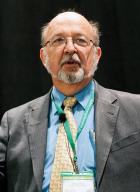
Roman Czujko, for overseeing the most thorough-going surveys and analysis of the education and employment pattern in the sciences, for his leadership in addressing issues related to the participation of all groups in the physics community, and for his commitment to aid physics departments in engaging their alumni in ever more productive ways.
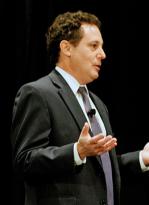
David E. Mosher, for his distinguished service in the United States Government’s Congressional Budget Office’s National Security Division, for bringing physics knowledge to bear on crucial issues of nuclear proliferation and disarmament and for educating others to address these critical issues.
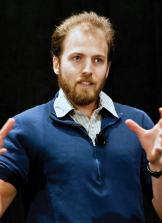 Henry Reich, for seizing the opportunity to communicate physics through the medium of YouTube videos, developing the wonderful “MinutePhysics” video series.
Henry Reich, for seizing the opportunity to communicate physics through the medium of YouTube videos, developing the wonderful “MinutePhysics” video series.
Honorary Member Inductions
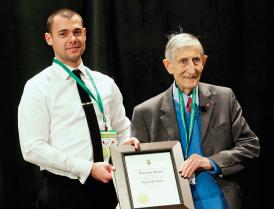 Freeman J. Dyson, for his seminal insights at the birth of quantum electrodynamics, his many contributions to mathematics, his leadership in the design of the TRIGA reactor, his elucidation of the stability of solid matter, his role in making known the grave dangers of nuclear weapons, his advocacy for the environment and sustainability, the breadth of his thought from Dyson spheres to nuclear spacecraft to the relationship of science and religion, and his profound commitment to humanity. Presented by Zone 9 AZC Blaine Law.
Freeman J. Dyson, for his seminal insights at the birth of quantum electrodynamics, his many contributions to mathematics, his leadership in the design of the TRIGA reactor, his elucidation of the stability of solid matter, his role in making known the grave dangers of nuclear weapons, his advocacy for the environment and sustainability, the breadth of his thought from Dyson spheres to nuclear spacecraft to the relationship of science and religion, and his profound commitment to humanity. Presented by Zone 9 AZC Blaine Law.
Daniel R. Green, for his major contributions to elementary particle physics, his mastery of the management of the large science collaborations of contemporary high-energy physics, his service as program manager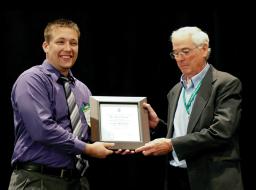 and collaboration board chair for the Compact Muon Solenoid (CMS) Detector Collaboration, for his commitment to training the next generation of collider physicists, and for his excellence in communicating physics widely. Presented by Zone 15 AZC Dayton Syme.
and collaboration board chair for the Compact Muon Solenoid (CMS) Detector Collaboration, for his commitment to training the next generation of collider physicists, and for his excellence in communicating physics widely. Presented by Zone 15 AZC Dayton Syme.
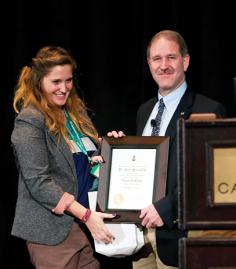 John M. Grunsfeld, for his studies in X-ray and gamma–ray astronomy; his leadership of the Space Telescope Science Institute; his service as a NASA mission specialist, including three Hubble Space Telescope service missions; his continuing leadership of the NASA Science Directorate; and his expansive contacts with young scientists and the public to share the joy of astronomy and space exploration. Presented by Zone 10 AZC Amanda Palchak.
John M. Grunsfeld, for his studies in X-ray and gamma–ray astronomy; his leadership of the Space Telescope Science Institute; his service as a NASA mission specialist, including three Hubble Space Telescope service missions; his continuing leadership of the NASA Science Directorate; and his expansive contacts with young scientists and the public to share the joy of astronomy and space exploration. Presented by Zone 10 AZC Amanda Palchak.
John A. Johnson, for his leadership in the discovery and characterization of exoplanets, including the search for Earth-like planets; the clarity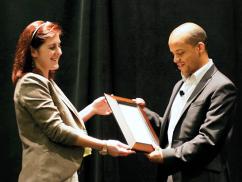 of his presentations of this ground-breaking work to astrophysics colleagues, the larger scientific community, and the public at large; and his inspirational mentorship of students. Presented by Zone 4 AZC Mary Clare Roche.
of his presentations of this ground-breaking work to astrophysics colleagues, the larger scientific community, and the public at large; and his inspirational mentorship of students. Presented by Zone 4 AZC Mary Clare Roche.
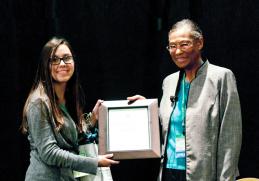 Mercedes Richards, for her tomographic studies of binary star systems, undertaken in tandem with hydrodynamic simulations; her encouragement of physics teachers; her interdisciplinary research in tomography; her leadership in science and mathematics enrichment programs for high school students; and her serious engagement with the public. Presented by Zone 16 AZC Julianna Lautenshleger.
Mercedes Richards, for her tomographic studies of binary star systems, undertaken in tandem with hydrodynamic simulations; her encouragement of physics teachers; her interdisciplinary research in tomography; her leadership in science and mathematics enrichment programs for high school students; and her serious engagement with the public. Presented by Zone 16 AZC Julianna Lautenshleger.
David Saltzberg, for his distinguished work to advance our understanding of elementary particles, neutrino oscillations, and the possible signatures of supersymmetry; for his leadership as a physics teacher and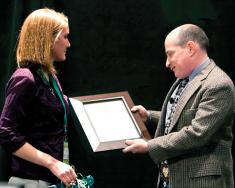 mentor of students, including his service as an SPS chapter advisor; and for bringing a profound understanding of physicists and their science to the general public as the science consultant for The Big Bang Theory. Presented by Zone 7 AZC Patricia Ingraham.
mentor of students, including his service as an SPS chapter advisor; and for bringing a profound understanding of physicists and their science to the general public as the science consultant for The Big Bang Theory. Presented by Zone 7 AZC Patricia Ingraham.
